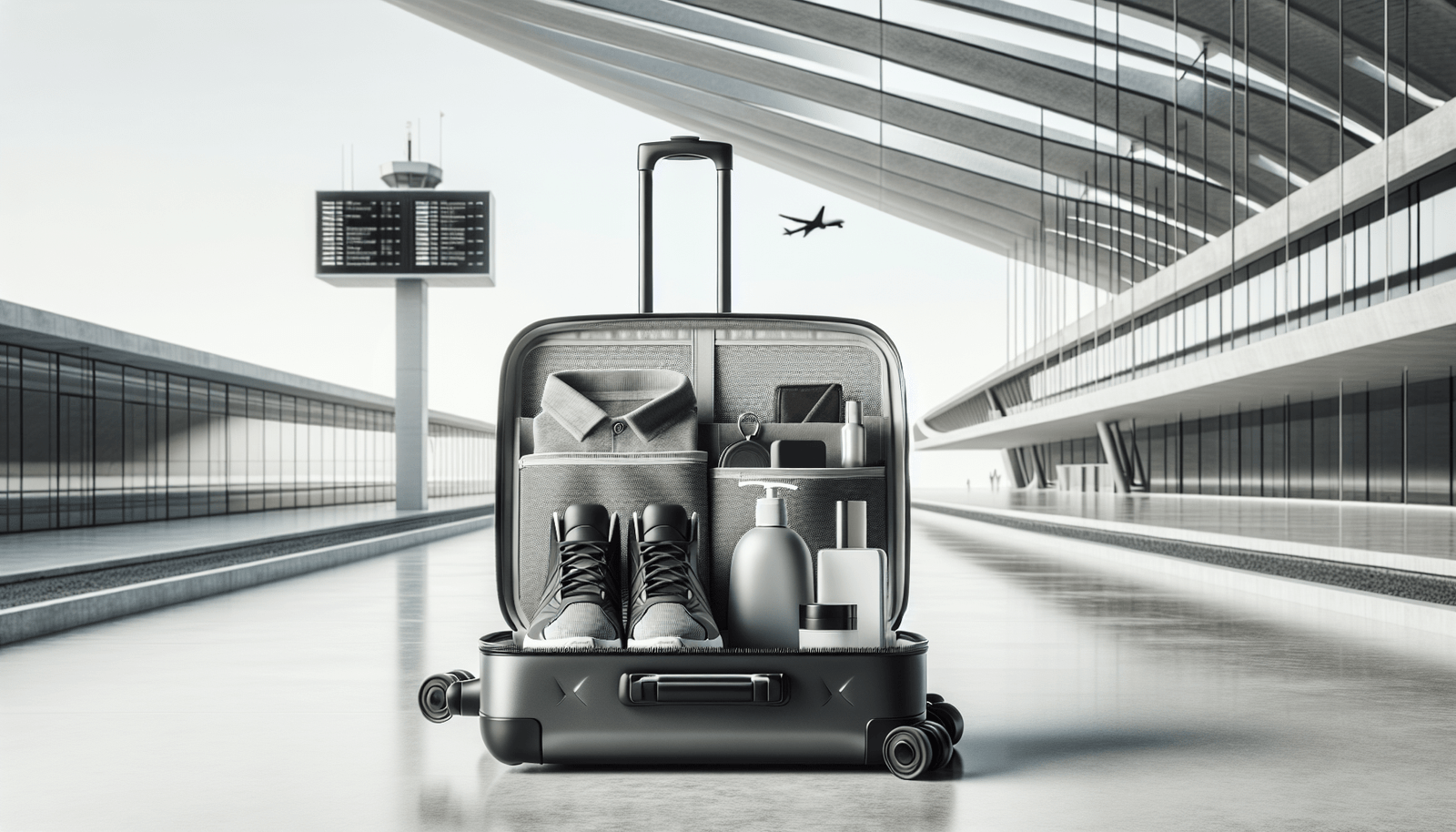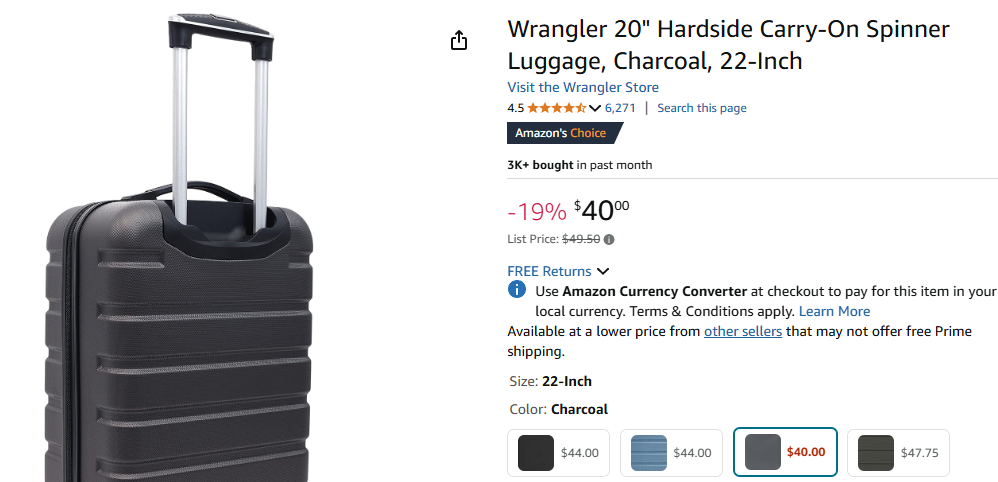Your travel adventure to Europe is about to get a bit more complicated with the introduction of new carry-on rules starting in September 2024. This change affects airports across the UK and all 27 EU countries, as travelers will need to adjust to returning to the days of tiny toiletry bottles. Despite previous hopes for more relaxed regulations on liquid quantities, new scanning technology has faced challenges, meaning it’s back to 100 milliliters or less for your carry-on liquids. These policies, for now, will remain in place as authorities work to iron out the technical kinks.
Amidst the buzz, rumors have been swirling about a new standardization of carry-on baggage sizes and weights across European airlines. You might have heard that you’re soon allowed just one piece of hand luggage and a small personal item with specific restrictions. However, that’s not entirely accurate, as there has been no official consensus on these changes. The individual airlines still determine their own rules, making it more crucial than ever to check your airline’s policy before you fly.
Understanding the New Carry-On Rules
Overview of changes as of September 1st, 2024
As of September 1st, 2024, Europe has introduced new regulations concerning carry-on luggage for travelers in the UK and the EU. These changes have been developed amidst a backdrop of rumors and misinformation, and it’s crucial to understand what’s new and what remains unchanged. The primary adjustments focus on liquid restrictions, carry-on dimensions, and policies that airlines across the region must adhere to.
Differences between rumors and reality
Rumors have been swirling about drastic changes in carry-on policies, including standardization across all European airlines and the decrease of allowable liquid quantities. While these speculations have stirred anxiety among travelers, the reality is somewhat different. Although discussions about harmonizing carry-on dimensions are ongoing, no definitive EU-wide regulations have been approved. Travelers can, however, expect a reversion to previous liquid restrictions due to technical issues faced with advanced scanning machines.
Impact on frequent travelers
For frequent travelers, these updates might feel like taking a step backward. The return to stricter liquid restrictions means revisiting old packing habits. However, the uncertainty surrounding size and weight rules may lead to extra vigilance and preparation before flying with different carriers. Frequent travelers often lean on flexibility and discipline when packing, making them generally better equipped to handle these transitions.
The Liquid Restrictions: Back to Basics
Reverting to the 100ml rule
After exploring relaxed liquid rules at certain test locations, Europe has reverted to the classic 100ml liquid restriction for all carry-on baggage. Travelers must place liquids, gels, and aerosols in containers not exceeding 100ml, all fitted snugly in a single, transparent plastic bag. This change is driven by the technical challenges encountered with the new generation of scanning machines, which have been sporadic in their effectiveness.
Technical challenges with new scanning machines
The new scanning machines, implemented as part of a move towards more relaxed liquid policies, have faced significant technical setbacks. While designed to enhance security and expedite the screening process, these machines have struggled with accuracy. Their inability to consistently identify liquids over 100ml led to a rollback in policy changes, necessitating the return to previous security measures to prevent security breaches.
Which airports eased policies and why it didn’t stick
Some significant airports, like those in London, Rome, and Amsterdam, briefly eased liquid restrictions using these advanced scanners. However, with reliability problems cropping up, the policies quickly reverted. Factors such as the high cost of these machines and an underwhelming performance underlined the necessity to revert to previous safety measures until these technical limitations can be overcome.

This image is property of i.ytimg.com.
Size and Weight Limitations: What’s on the Horizon?
Rumors versus confirmed policies
The buzz about standardized carry-on dimensions across European airlines lacks the foundation in confirmed policy. While discussions are ongoing, no uniform standard for sizing and weight has been enacted. These deliberations aim to create transparency and protect consumers, but each airline currently retains the autonomy to define its rules.
Proposed dimensions and weight standards
Discussions have brought about proposals suggesting one carry-on bag and one personal item per passenger, with a combined weight not exceeding 10 kg (approximately 22 lbs). Though enticing for travellers who expect consistency, these are only proposals, reflecting potential changes rather than active standards.
Airline discretion and the absence of standardization
Despite ongoing dialogues, airlines presently exercise discretion in enforcing their carry-on regulations. Different aircraft and service models mean uniform size and weight allowances are impractical at present, making standardization a challenging prospect. This variability requires travelers to be vigilant about the specific policies of their chosen carriers.
The Tech Behind the Restrictions
Advanced scanning machines: what they promised
Advanced scanners promised a future where liquid restrictions could be relaxed, offering travelers greater convenience and smoother security checks. The technology aimed to detect potentially hazardous substances amid larger liquid quantities without the need for separation or size limits.
Why the machines didn’t live up to expectations
While the innovation was promising, practical implementation has been problematic. These machines failed to deliver consistency in identifying acceptable liquid contents, prompting a swift return to proven security protocols. Technical imperfections, alongside significant cost implications, have curtailed wider adoption.
Future prospects for technology easing travel
Technological pursuits continue to push boundaries, with hopes that future iterations of scanners will alleviate current limitations. Research and development are expected to address the shortcomings, pursuing precision and reliability to allow for more relaxed carry-on regulations in the future.

Travelers’ Frustration: The Reactions
Feedback from travelers and industry experts
Travelers and industry experts have expressed disappointment with recent shifts back to older regulations after a taste of more flexible policies. Many highlight issues such as the inconvenience of repacking toiletries to fit current standards and ongoing uncertainty about the future.
Navigating misinformation in travel news
Misinformation exacerbates travelers’ frustrations, blurring the lines between actual changes and speculative headlines. It’s advisable for travelers to rely on official sources such as airline announcements and government advisories for the most accurate guidelines.
Coping strategies for frequent flyers
Frequent flyers are adjusting their strategies by preparing kits that comply with the 100ml rule and maintaining awareness of the distinct policies of different airlines. To ease the burden, they emphasize streamlined packing and making strategic choices about what to place in carry-on versus checked baggage.
In-Flight Experiences and What to Expect
Different policies across airlines
Airlines maintain varying policies concerning carry-on luggage, with differences arising from available aircraft space and service models. High-capacity diversions like low-cost carriers frequently impose stricter carry-on limits, while premium airlines might offer more generous allowances as a matter of passenger convenience.
Possible harmonization in the future
The possibility of harmonized policies is on the horizon but currently elusive. Efforts to establish consistent rules across airlines may yield positive results with continued dialogue between industry stakeholders, potentially enhancing the travel experience by reducing confusion.
The role of E.U. discussions in shaping policies
E.U. discussions provide a platform for exploring standardized policies aimed at improving transparency and consumer protection across airlines. The role of these discussions is pivotal and signals a commitment to addressing these issues collectively, even if outcomes are still in formative stages.

Rumors and Realities: The Truth Behind the Buzz
Origins of carrier constraints rumors
Rumors about stringent new carrier constraints often originate from misinterpretations of ongoing discussions and workshops held by bodies like the European Parliament. These headlines can gain traction without the backing of finalized, official legislation.
Separating fact from falsehood
Clarifying these rumors involves separating what stakeholders would like to achieve from what has been agreed upon. Official communications and verified reports remain the trusted sources for distinguishing reality from misinformation.
Impact of the E.U. parliamentary discussions
E.U. parliamentary discussions influence future regulatory directions even if immediate changes are not forthcoming. They underscore the interests and challenges of airline policy while acknowledging the diverse operational frameworks that airlines operate under.
What Lies Ahead? The Future of Carry-On Regulations
Planned commission workshops and outcomes
Future commission workshops slated for exploration of carry-on standards indicate ongoing interest and potential future changes. These workshops aim to build on previous dialogues, gather comprehensive data, and propose effective regulatory frameworks.
Potential new standards and their implications
Emerging standards possess the promise of improved consistency and clarity for travelers, simplifying travel plans across European airlines. These standards would potentially redefine packing routines and influence both consumer behavior and airline operations.
The balancing act: consumer protection vs. airline capabilities
Balancing consumer protections with airline logistical capabilities requires attentive consideration. Effective policies must take into account airline capacities, consumer convenience, and overall safety while ensuring that measures remain practical and beneficial across the board.
Tips for Navigating the Carry-On Challenges
Pack smart: maximizing space within limits
Maximizing space involves prioritizing essential items and using packing cubes or compression bags to streamline your packing process. Selecting adaptable clothing and investing in travel-sized products can also create more room in your luggage.
Avoiding excess fees and hiccups
To avoid extra fees, familiarize yourself with each airline’s carry-on policy before packing and leaving home. Consider weighing your bag to ensure it meets weight limits and paying for extras in advance if needed, as gate fees often are higher.
Resources and tools to ease your travel process
Leverage apps and tools that help you track baggage limits and plan outfits strategically. Reading reviews and seeking advice from travel communities can provide practical insights and recommendations that enhance your travel experience.
Conclusion
Summarizing the key changes and their impacts
With carry-on regulations reverting to older, stricter liquid restrictions, travelers face a familiar landscape peppered with uncertainty about dimension and weight standards. Although changes are slower and less drastic than some anticipated, ongoing discussions indicate a future ripe with potential refinement.
What travelers need to prepare for in the future
Travelers should maintain an adaptable and informed approach to packing, staying abreast of any policy changes. Being prepared for variability across different airlines while upholding current restrictions are essential strategies until harmonized regulations emerge.
Encouragement to stay informed and adaptable
As you venture through Europe’s airports, let adaptability be your constant companion. Monitoring official channels for changes and engaging with supportive travel communities will empower you to navigate the evolving landscape with confidence and ease. Happy travels!
Some of the links on this site are affiliate links, which means I may earn a small commission if you click on them and make a purchase, at no additional cost to you. As an Amazon Associate, I earn from qualifying purchases.

